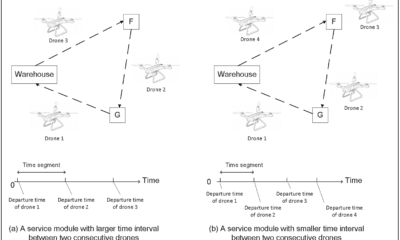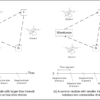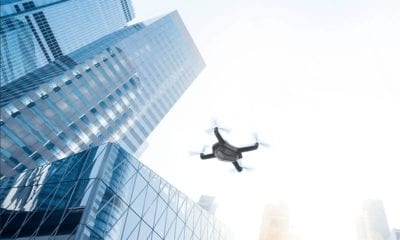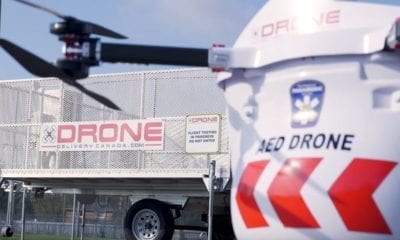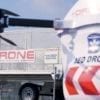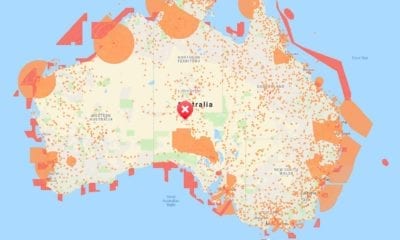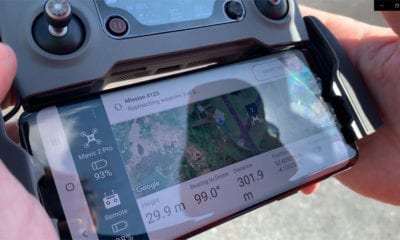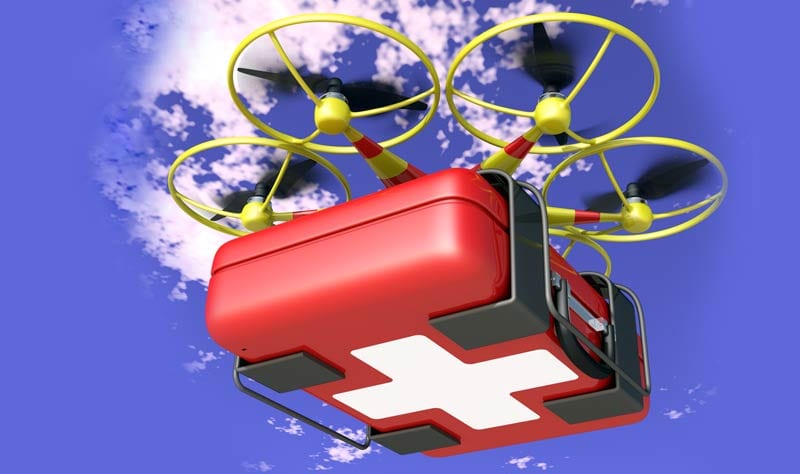
Drone Delivery
Optimizing Delivery of Emergency Medical Supplies with Drones
Imagine this…
Fleets of drones going through the air, skipping the busy streets and delivering medical supplies in a quick way to the ones that need them most.
Believe it or not, this could become a reality very soon – and a reality which will ease up the traffic congestion and help the emergency services every time a patient needs a dose of his medical supplies.
New Conference Paper Aims On Optimizing The Emergency Medical Supplies Delivery With UAVs
According to a new conference paper written by three authors prior to the 2018 ISE Annual Conference at the State University of New York, the delivery of medical supplies and services is critical nowadays, especially when it comes to remote areas which are in need of quick assistance.
The study evaluates the hypothetical delivery of medical supplies, the costs of delivery and the relative cost of using the Unmanned Aircraft Vehicles (UAVs). The technical information such as the distance range, weight capacity, cost of equipment, amortization, operational conditions and other risk factors are all properly outlined.
In the beginning, the authors of this paper address the interruptions of the traditional land-based transportation. According to them:
“Traditional land-based transportation systems used in supply chains are fixed networks prone to interruptions via natural disasters, political strife and terrorism and may prove not to be the most cost-effective methods available. Many times, public health programs, which deliver lifesaving vaccines and medical supplies to within a developing country will have weaker supply chains and encounter a poor transportation delivery network and or infrastructure. Drones can be a viable substitute for traditional land transportation systems and prove to be useful in medical supply chains, enabling caregivers the ability to deliver vaccines, medication, routine test kits, refill drugs and pick up patients’ exam kits such as blood and urine samples.”
A Statistical View Of The Entire Situation
The authors of this paper named “Optimizing the Emergency Delivery of Medical Supplies with Unmanned Aircraft Vehicles” also provide a statistical view of the entire situation. They are confident that drones have a potential to overcome the traditional barriers of poor transportation infrastructure, equipment and terrain.
Referring to another study, “it was determined that implementing an Unmanned aerial system (UAS) improved the vaccine availability to 96% (UAS) vs. 94% (TMLTS, traditional multi- tiered land transport systems. UAS also produced a logistics cost savings of .08 per dose as compared to TMLTS.”
Medical Supply Chains Should Be Strong And Flexible
On top of the entire outlined methodology and proposed plan on tackling the issue of medical supply delivery, the authors of the paper concluded the following:
“A weak, medical supply chain can cause a multitude of patient deaths in developing countries when the necessary supplies are delayed in delivery or are never delivered. In some cases, the delivery is greatly affected by the poor infrastructure of dangerous routes, pathways and undeveloped roads.”
That said, the purpose of their study was to review the delivery performance costs of systems utilizing UAVs for the delivery of necessary medications and tests – especially when a system like this is compared to traditional, truck delivery systems.
Source: Proceedings of the 2018 IISE Annual Conference, K. Barker, D. Berry, C. Rainwater, Optimizing the Emergency Delivery of Medical Supplies with Unmanned Aircraft Vehicles

